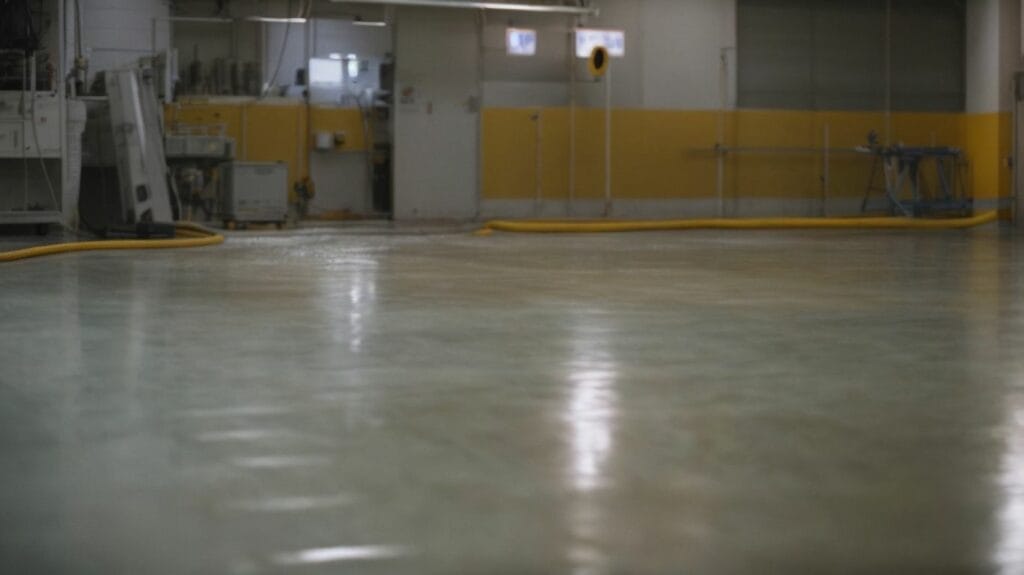Epoxy flooring is a popular choice for both residential and commercial spaces due to its durability and sleek appearance. It is a type of resin that is applied as a topcoat to concrete floors to create a shiny and smooth surface. This type of flooring is also known for its resistance to chemicals, stains, and impact. To keep your epoxy flooring looking its best, it is important to clean and maintain it properly properly.
One of the key benefits of epoxy flooring is its easy maintenance. With regular cleaning and maintenance, epoxy floors can last for several years without the need for major repairs. To clean epoxy flooring, follow these simple steps:
- Sweep or Vacuum the Floor: Use a soft-bristle broom or a vacuum with a soft brush attachment to remove any loose dirt and debris from the surface.
- Mop with a Mild Cleaner: Mix a mild, pH-neutral cleaner with water and mop the floor. Avoid using harsh chemicals or abrasive cleaners, as they can damage the epoxy finish.
- Spot Clean Stains: For any stubborn stains, spot clean with a non-abrasive cleaner or a mixture of water and white vinegar. Avoid using abrasive tools or scrub brushes as they can scratch the surface.
- Rinse with Water: After mopping, rinse the floor with clean water to remove any residue or cleaner.
Apart from regular cleaning, proper maintenance is also essential to prolong the lifespan of your epoxy flooring. Here are some tips to help maintain your epoxy floors:
- Use Mats or Rugs in High-Traffic Areas: Place mats or rugs in high-traffic areas to prevent scratches or damage to the epoxy finish.
- Avoid Harsh Chemicals: Avoid using harsh chemicals or solvents on your epoxy floors, as they can cause the finish to deteriorate.
- Repair Any Cracks or Chips: If you notice any cracks or chips on your epoxy flooring, it is important to repair them immediately to prevent further damage.
- Regularly Inspect and Touch Up Sealer: Epoxy floors require a sealer to maintain their shine and durability. Regularly inspect the sealer and touch up any areas that may have worn off.
Some common mistakes that should be avoided when cleaning and maintaining epoxy flooring include using the wrong cleaning products, not cleaning up spills immediately, and skipping regular maintenance. These mistakes can lead to damage and costly repairs.
To keep your epoxy flooring in top condition, it is recommended to clean it daily and spot clean as needed. Deep cleaning should be done every 1-2 months, and sealer inspection and touch-up should be done every 6-12 months. By following these cleaning and maintenance guidelines, you can ensure that your epoxy flooring stays looking its best for years to come.
Key Takeaways:
- Regular maintenance is key to preserving the durability and appearance of epoxy flooring.
- Avoid harsh chemicals and clean up spills immediately to prevent damage.
- Use mats or rugs in high-traffic areas and schedule deep cleaning every 1-2 months for optimal upkeep.
What Is Epoxy Flooring?
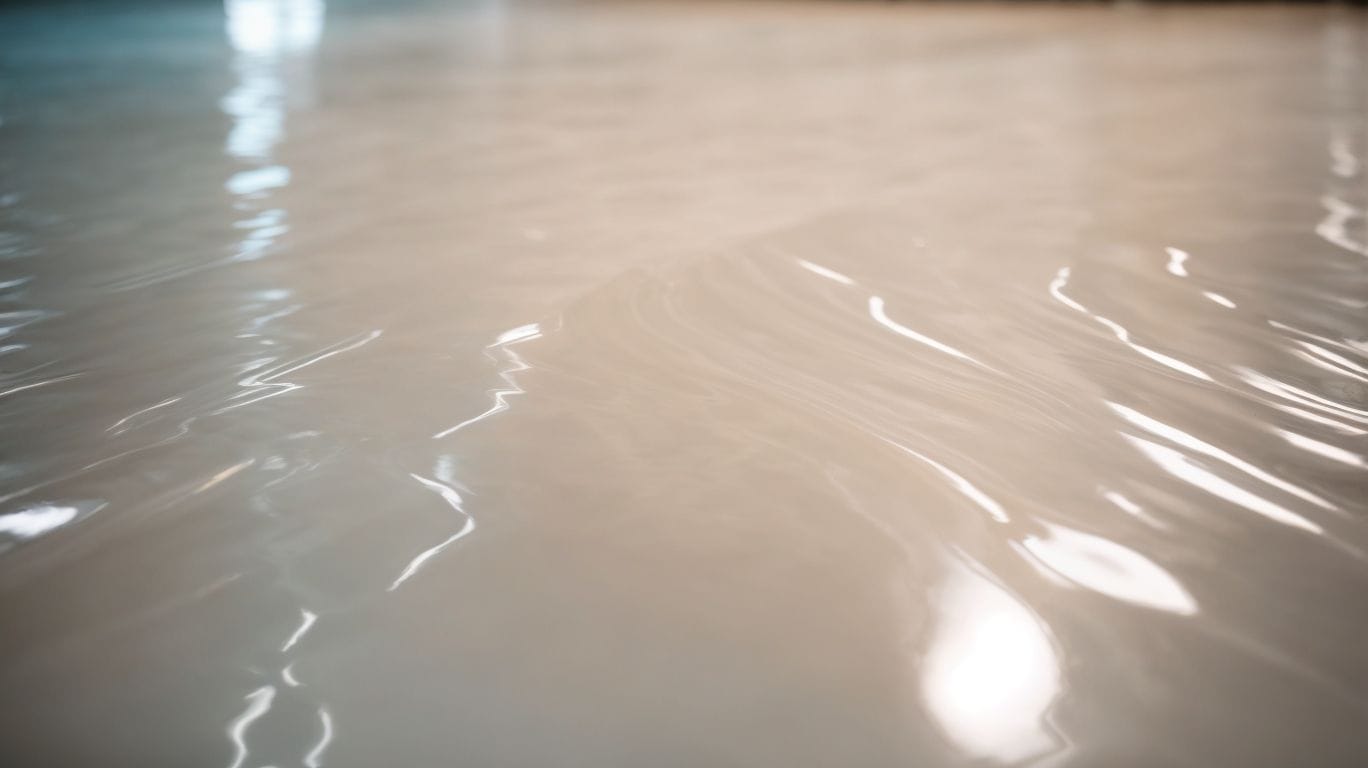
Photo Credits: Diyepoxyresin.Com by Keith Green
Epoxy flooring is a highly durable and long-lasting solution that is applied over concrete floors to create a smooth, seamless, and resilient surface. It is composed of a resin and a hardener that chemically reacts to form a strong plastic material. This type of flooring is commonly used in garages, warehouses, and industrial or commercial spaces due to its exceptional resistance to chemicals, stains, and wear.
The concept of epoxy flooring was first introduced in the 1920s by Dr. Pierre Castan, a Swiss chemist who discovered the process of polymerizing epoxides to produce epoxy resins, ultimately leading to the creation of epoxy flooring.
What Are the Benefits of Epoxy Flooring?
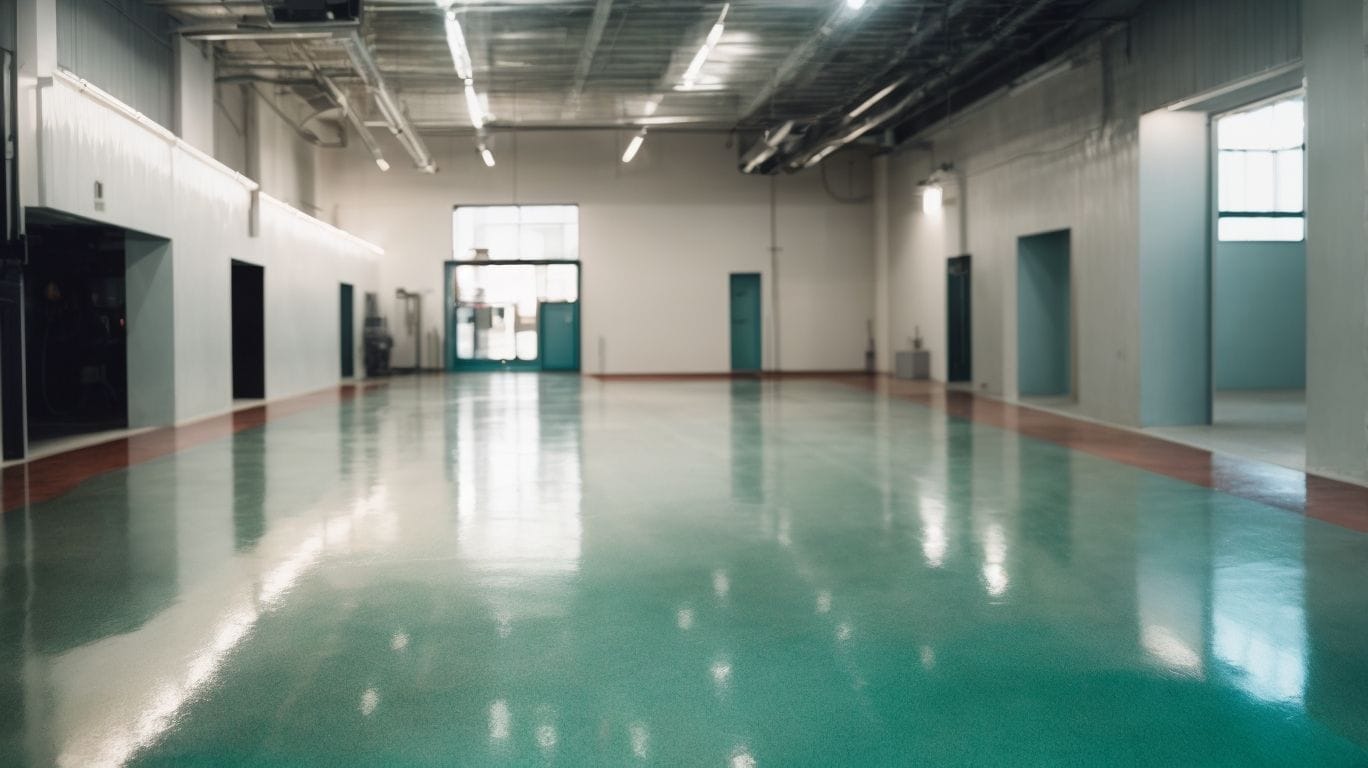
Photo Credits: Diyepoxyresin.Com by Donald Walker
Epoxy flooring offers a range of benefits:
- Durability: Epoxy floors are highly resistant to chemicals, stains, and abrasion, making them ideal for industrial and commercial settings.
- Easy maintenance: They are easy to clean and require minimal maintenance, reducing long-term upkeep costs.
- Customization: Epoxy coatings come in various colors and finishes, allowing for decorative and personalized flooring options.
- Safety: Epoxy coatings are seamless, slip-resistant, and can be formulated to meet safety standards.
How to Clean Epoxy Flooring?
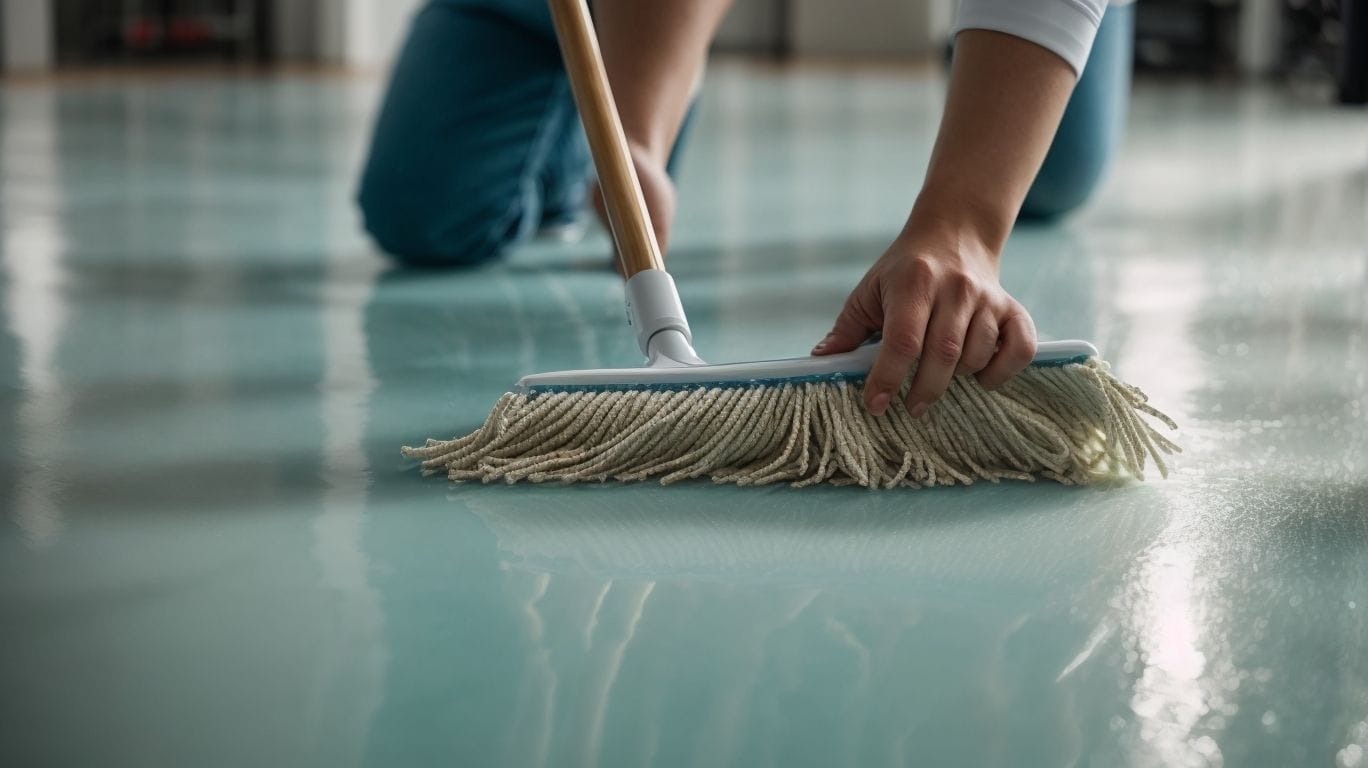
Photo Credits: Diyepoxyresin.Com by Logan Lopez
Maintaining clean and well-maintained epoxy flooring is crucial to preserving its durability and appearance. In this section, we’ll discuss the step-by-step process of properly cleaning your epoxy flooring. From sweeping or vacuuming to mopping with a mild cleaner, we’ll cover all the necessary techniques to keep your flooring looking pristine. Additionally, we’ll touch on spot-cleaning stains and the importance of rinsing with water to ensure a thorough cleaning.
1. Sweep or Vacuum the Floor
- Begin by sweeping or vacuuming the floor to eliminate any loose dirt or debris.
After sweeping or vacuuming, you can use a mild cleaner to mop the floor and remove any remaining dirt or stains.
In order to maintain your epoxy flooring, it is important to inspect and touch up the sealer regularly. Additionally, place mats or rugs in areas with high foot traffic and avoid using harsh chemicals for maintenance.
2. Mop with a Mild Cleaner
- Prepare the mild cleaner solution by mixing a gentle floor cleaner with warm water.
- Using a clean mop, dip it into the mild cleaner solution and wring out excess water.
- Mop the epoxy flooring, starting from one corner and working your way towards the exit to avoid stepping on the wet areas.
- Rinse and wring out the mop frequently to ensure effective cleaning.
- Allow the floor to air dry completely.
3. Spot Clean Stains
- Blot the stain with a clean cloth or paper towel to absorb as much liquid as possible.
- Apply a mild detergent or cleaner specifically designed for epoxy flooring to the stained area.
- Gently scrub the stain with a soft-bristled brush or non-abrasive sponge.
- Rinse the area thoroughly with clean water.
Pro-tip: To effectively spot clean stains, always address them promptly to prevent them from setting into the epoxy surface.
4. Rinse with Water
- After mopping with a mild cleaner, rinse the surface with water to remove any remaining residue.
Did you know? Epoxy flooring is highly resistant to chemicals, making it an ideal choice for industrial and commercial spaces.
How to Maintain Epoxy Flooring?
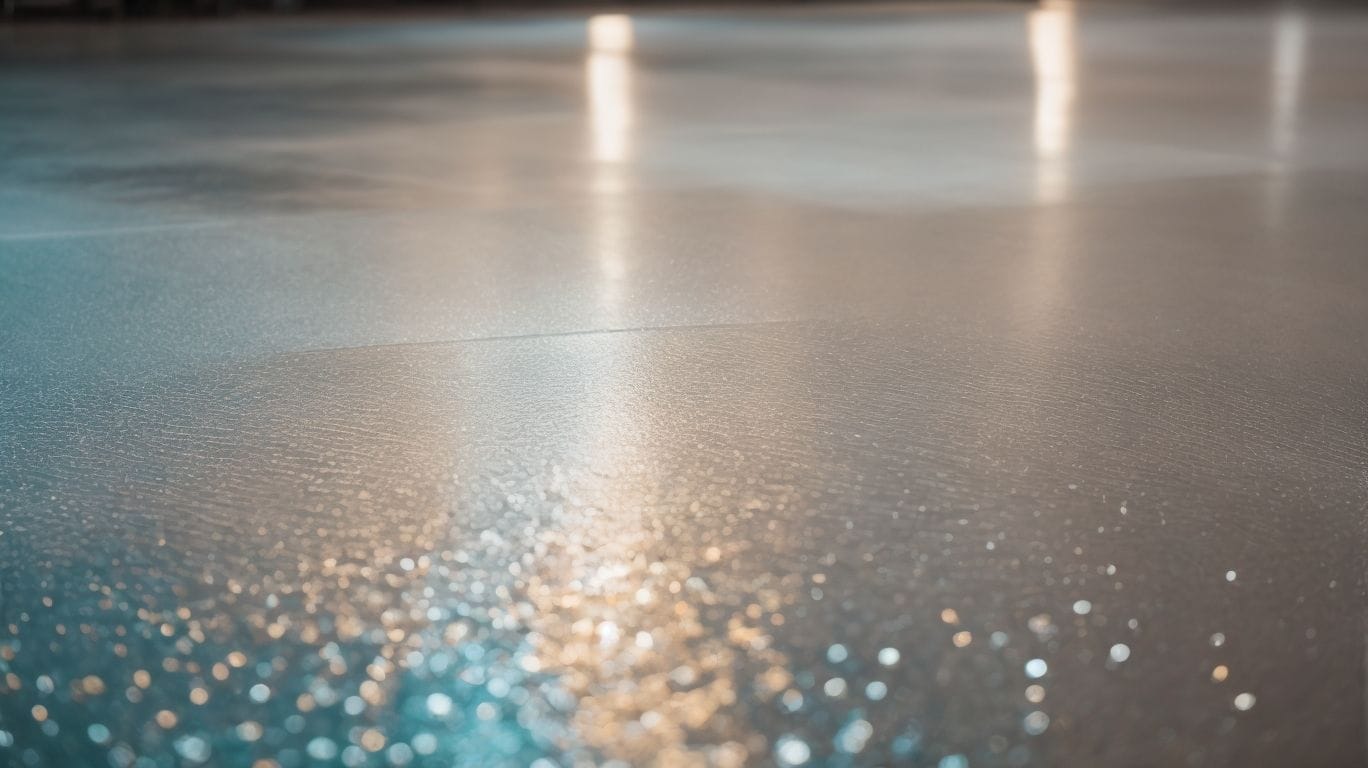
Photo Credits: Diyepoxyresin.Com by Elijah Hill
Proper maintenance is key to preserving the beauty and functionality of epoxy flooring. In this section, we will discuss the best practices for maintaining your epoxy floors to ensure their longevity and durability. From simple preventative measures like using mats or rugs in high-traffic areas to more involved tasks like repairing cracks and chips, we’ll cover everything you need to know to keep your epoxy flooring looking as good as new. So, let’s dive in and learn how to maintain your epoxy floors properly properly.
1. Use Mats or Rugs in High Traffic Areas
- To minimize wear and tear on the epoxy flooring, it is recommended to use mats or rugs in high-traffic areas.
As the use of mats or rugs in high-traffic areas grew in popularity, it greatly enhanced the durability and aesthetic of epoxy flooring, making it a common practice in both residential and commercial settings.
2. Avoid Harsh Chemicals
When maintaining epoxy flooring, it is essential to steer clear of harsh chemicals to prevent any potential damage. Here’s how:
- Use a mild cleaner: Choose pH-neutral or soap-free cleaners to avoid any harm to the epoxy surface.
- Avoid acidic or alkaline cleaners: These can cause the epoxy to degrade and compromise its durability.
- Choose appropriate cleaning tools: Opt for soft-bristle brushes or mops to clean the flooring gently.
- Spot test new products: Before using any new cleaner, always test it in an inconspicuous area to ensure it will not harm the epoxy.
A facilities manager made the mistake of using a strong chemical cleaner on epoxy flooring, resulting in discoloration and weakening of the protective seal. This incident highlighted the importance of using gentle cleaning products to avoid costly repairs.
3. Repair Any Cracks or Chips
- Assess the extent of damage to the epoxy flooring, identifying all cracks and chips.
- Clean the damaged areas thoroughly to remove any dirt, debris, or contaminants.
- Prepare the epoxy repair compound according to the manufacturer’s instructions.
- Fill the cracks and chips with the epoxy repair compound, using a putty knife to ensure even application.
- Smooth the filled areas with sandpaper once the compound has dried, blending it seamlessly with the rest of the floor.
Pro-tip: To repair any cracks or chips, utilize a matching color tint for the epoxy repair compound to integrate the repaired areas with the existing flooring seamlessly.
4. Regularly Inspect and Touch Up Sealer
- Regularly inspect the epoxy flooring for any signs of wear, such as cracks or chips, and touch up the sealer as needed.
- Apply a fresh coat of sealer in high-traffic areas or where the epoxy coating shows signs of deterioration.
- Prior to applying the sealer, make sure to thoroughly clean and dry the area.
- Choose a compatible epoxy sealer and follow the manufacturer’s guidelines for proper application.
What Are the Common Mistakes in Cleaning and Maintaining Epoxy Flooring?

Photo Credits: Diyepoxyresin.Com by Bryan Harris
While epoxy flooring is known for its durability and low maintenance, there are common mistakes that can lead to damage and deterioration. In this section, we will discuss the most common mistakes in cleaning and maintaining epoxy flooring and how they can affect the overall longevity and appearance of your floors. From using the wrong cleaning products to neglecting regular maintenance, we will cover the key factors to keep in mind to ensure your epoxy flooring stays in top condition.
1. Using the Wrong Cleaning Products
- Be sure to carefully read labels before using any cleaning products on epoxy flooring to ensure compatibility.
- Avoid using acidic cleaners, ammonia-based products, or rough scrubbing pads.
- Instead, opt for pH-neutral cleaners or those specifically designed for epoxy floors.
- It is always a good idea to test any new cleaning product in a small, inconspicuous area first.
Using the wrong cleaning products can cause damage and discoloration to your epoxy flooring, negatively impacting its durability and appearance.
2. Not Cleaning Up Spills Immediately
- In order to prevent stains and damage, it is important to act promptly.
- If a substance is spilled, use a clean cloth or paper towel to blot it.
- Any residue can be removed with a mild cleaner.
- Afterward, make sure to rinse the area thoroughly with water and dry it completely.
One time, a friend accidentally spilled red wine on their epoxy flooring, but they acted quickly and cleaned it up, preventing any potential staining or damage.
3. Skipping Regular Maintenance
- Ignoring Sealer Maintenance: Failing to inspect and touch up the sealer regularly can lead to premature wear and damage.
- Neglecting Crack and Chip Repair: Overlooking cracks or chips allows them to worsen, compromising the floor’s integrity.
- Sporadic Deep Cleaning: Infrequent deep cleaning can result in the buildup of dirt and grime, making it harder to clean.
Regular, proactive maintenance is crucial to preserving the quality and longevity of epoxy flooring. It is essential not to skip regular maintenance in order to keep the flooring in top condition.
How Often Should Epoxy Flooring Be Cleaned and Maintained?
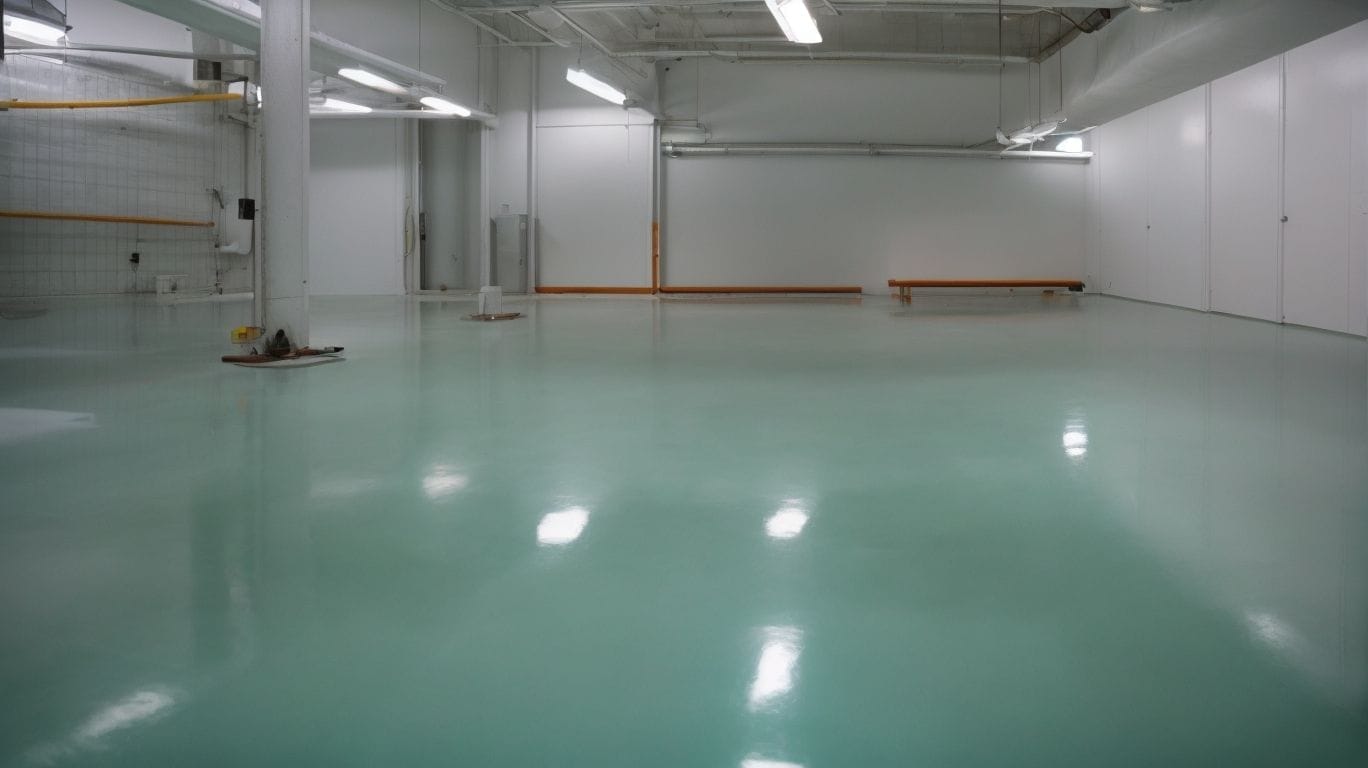
Photo Credits: Diyepoxyresin.Com by Wayne Wilson
Proper cleaning and maintenance are essential for keeping your epoxy flooring in top condition. But how often should you clean and maintain it? In this section, we will discuss the recommended frequency for various cleaning and maintenance tasks. From daily cleaning and spot cleaning to deep cleaning and sealer inspection, we will cover everything you need to know to keep your epoxy flooring looking its best.
1. Daily Cleaning and Spot Cleaning as Needed
- Keep the floor clean by sweeping or vacuuming loose debris daily.
- Immediately spot clean spills or stains as they occur.
- For spot cleaning, use a mild cleaner and mop as needed.
- After cleaning, rinse the floor with water to remove any remaining cleaning residue.
Pro-tip: To maintain the pristine appearance of epoxy flooring, promptly address spills to prevent stains and ensure regular daily and spot cleaning.
2. Deep Cleaning Every 1-2 Months
- Remove any furniture or objects from the floor to access the entire surface.
- Sweep or vacuum the floor to eliminate loose debris and dirt.
- Mix a mild cleaner with water and mop the entire floor, ensuring even coverage.
- Spot clean any stains with a gentle cleaner and soft-bristled brush.
- Rinse the floor thoroughly with clean water to remove any cleaner residue.
True story: After performing a deep cleaning every 1-2 months on my epoxy flooring, it maintained its glossy finish, resisting stains and wear despite heavy foot traffic.
3. Sealer Inspection and Touch Up Every 6-12 Months
- Regularly inspect the floor sealer every 6-12 months for any signs of wear and tear.
- Make sure to touch up any damaged areas to maintain the protective coating.
Proper maintenance of epoxy flooring can ensure its durability and aesthetic appeal for many years to come.
Expert Tips for Cleaning and Maintaining Epoxy Flooring
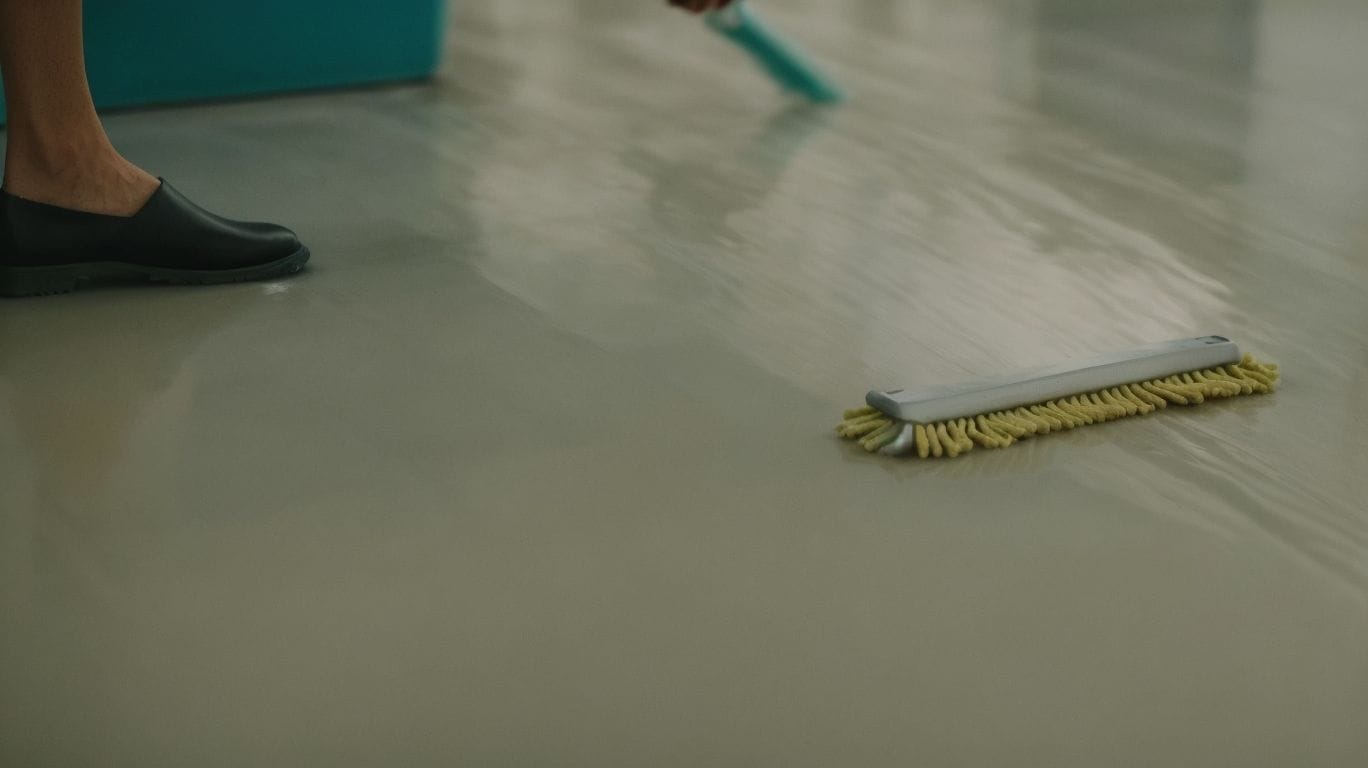
Photo Credits: Diyepoxyresin.Com by Peter Campbell
- Regular Cleaning: It is important to sweep or dust mop daily to remove dirt and debris from epoxy flooring.
- Deep Cleaning: For tougher stains, use a soft-bristle scrub brush and a mild detergent solution to clean the flooring thoroughly.
- Preventative Maintenance: To minimize tracked-in dirt and debris, place doormats at entry points.
Epoxy flooring is highly resistant to stains, chemicals, and moisture, making it an ideal choice for garages, industrial spaces, and commercial areas. Follow these expert tips for cleaning and maintaining your epoxy flooring to keep it looking pristine for years to come.
